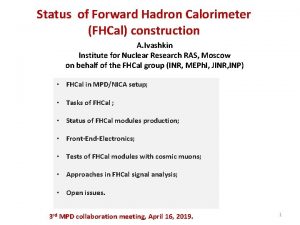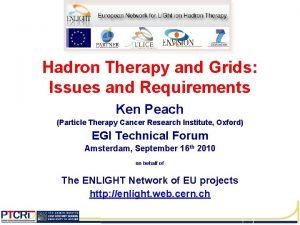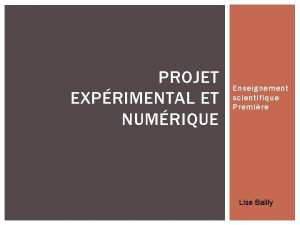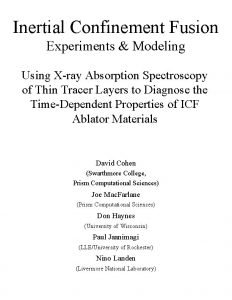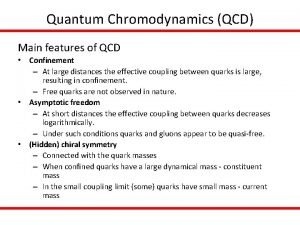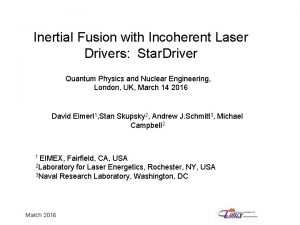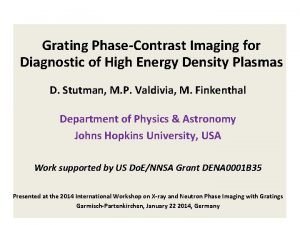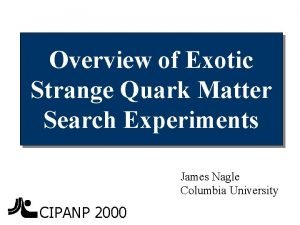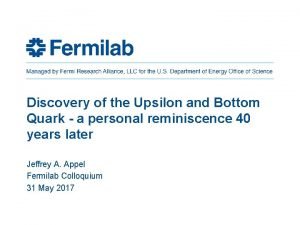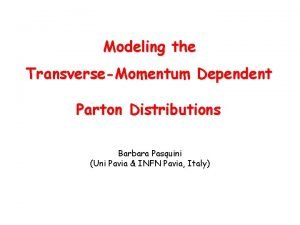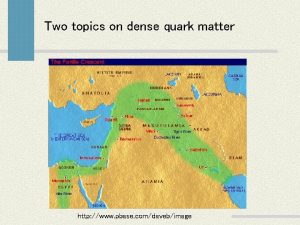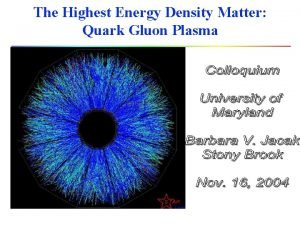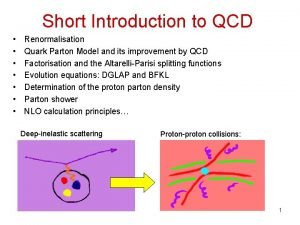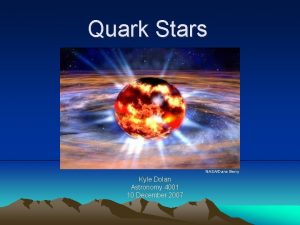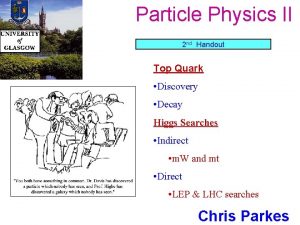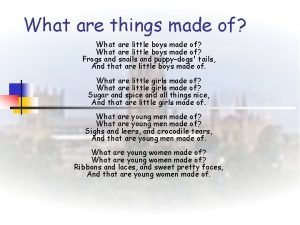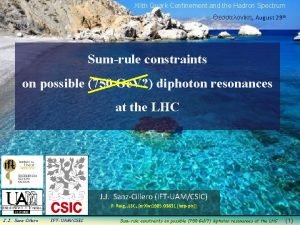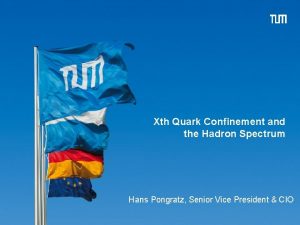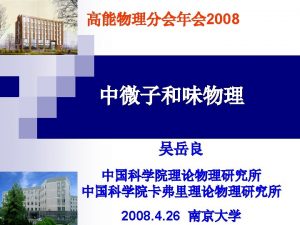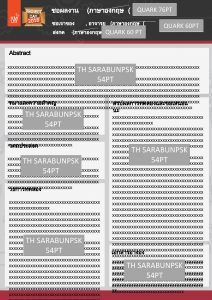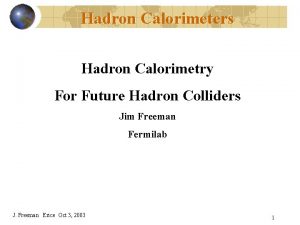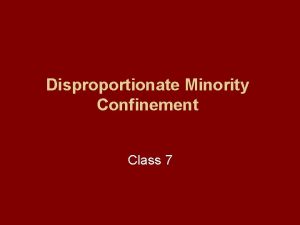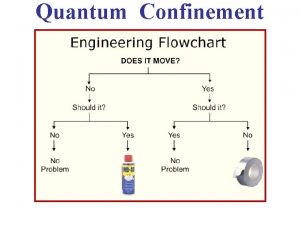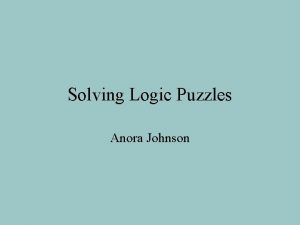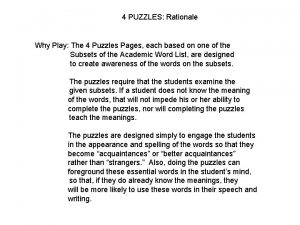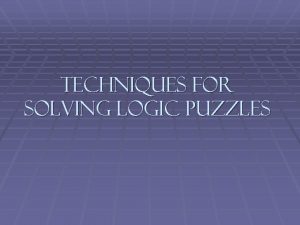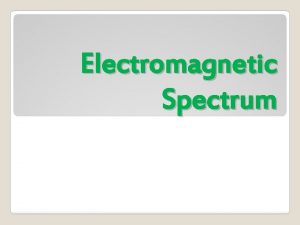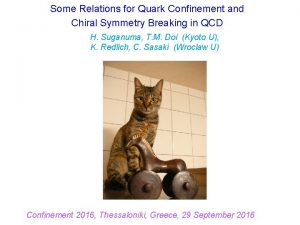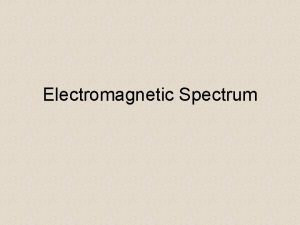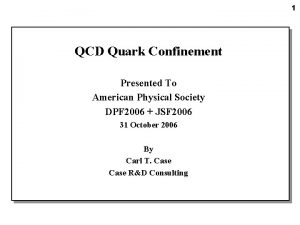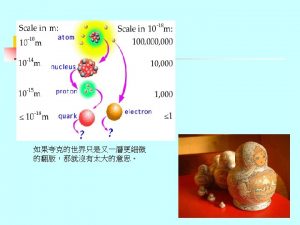XIth Quark Confinement and the Hadron Spectrum Puzzles



























- Slides: 27

XIth Quark Confinement and the Hadron Spectrum Puzzles in Quarkonium Hadronic Transition with Two Pion Emission F. Fernandez D. R. Entem, P. G. Ortega, J. Segovia Nuclear Physics Group and IUFFy. M University of Salamanca

Outline ü Motivation üExperimental scenario ü The QCD Multipole Expansión Method üThe constituent quark model üHybrids: the Quark Confining String model üCharmonium and Bottomonium Results üBottom molecules: Results üSummary

Motivation: Hadronic Transitions - Hadronic Transition are importante decay modes of heavy quarkonia. - Light hadrons are converted from de gluons emitted by the quark Q and trhe antiquark in the transition. - The typical momentum of the gluons is two low to justify perturbative calculations

Experimental scenario Y(4660) Y(4360) Y(4415) Y(4160) Y(4040) (PRD 89 111103)

Y(4260) Y(4660) Y(4360) Y(4415) Y(4160) Y(4040) Experimental scenario (PRD 86 051102)

Experimental scenario PRD 75 071103 PRL 100 112001 differs by two orders of magnitude!

The QCD Multipole Expansion Method • Analogous to the QED multipole expansion Zero for color singlets • The interaction between two color singlet requires two gluon emission. Lowest multipoles E 1 E 1 E 1 M 1 E 1 E 2…. . • Two pion transition E 1 E 1 Intermediate state after the emission of the first gluon and before the emission of the second hybrid

The QCD Multipole Expansion Method Heavy quark factor Hadronic factor Hybrid model wf Quark Model wf C 1 and C 2 are constant fitted to the decays

The Constituent Quark Model

The constituent quark model

The constituent quark model • N-N interaction – F. Fernández, A. Valcarce, U. Straub, A. Faessler. J. Phys. G 19, 2013 (1993) – A. Valcarce, A. Faessler, F. Fernández. Physics Letters B 345, 367 (1995) – D. R. Entem, F. Fernández, A. Valcarce. Phys. Rev. C 62 034002 (2000) – B. Juliá-Diaz, J. Haidenbauer, A. Valcarce, and F. Fernández. Physical Review C 65, 034001, (2002) • Baryon spectrum – H. Garcilazo, A. Valcarce, F. Fernández. Phys. Rev. C 64, 058201, (2001) – H. Garcilazo, A. Valcarce, F. Fernández. Phys. Rev. C 63, 035207 (2001) • Meson spectrum. – J. Vijande, F. Fernández, A. Valcarce. J. Phys. G 31, (2005) – J. Segovia, A. M. Yasser, D. R. Entem, F. Fernandez Phys. Rev D. 78 114033 (2008) • . Reports – A. Valcarce, H. Garcilazo, F. Fernandez, P. Gonzalez Rep. Prog. Phys. 68 965 (2005) – J. Segovia, D. R. Entem, F. Fernandez, Int. Jour. Mod. Phys. E 22 1330026 (2013)

Results for the 1 - - sector PRD 78 114033 (2008)

The Quark Confining string model • Mesons are composed of a quark and an antiquark linked by a color electric gluon flux line. • The string and the quarks can rotate as a unit (ordinary mesons) • Vibrational modes provides new states beyond the charmonium picture: Hybrids + Meson Hybrid

Results Hybrids Ψ(4360) Ψ(4660) ϒ(10860) ? ? JPC=1 - - hybrid mesons masses in Mev

Results charm sector Branching ratio x Γe+e- for the JPC=1 - - charmonium states Cross section at peak for the JPC=1 - - charmonium states

Y(4660) Y(4360) Y(4415) Y(4160) Y(4040) Results charm sector

Results bottom sector Branching ratio x Γe+e- for the JPC=1 - - bottomonium states Cross section at peak for the JPC=1 - - bottomonium states

First conclusion The mechanism which explain the value of the cross section of the ψ(4360) and the ψ(4660) does not justify the anomalous behaviour of the ϒ(10860)

Molecules Molecular state: loosely bound state of a pair of mesons. The dominant binding mechanism should be pion exchange Two quark states can mix with two meson with the same quantum numbers

Molecules Way molecules can enhace the decay width ? OZI forbidden OZI alloved Pictures from A. Ali

Coupled channels: BB

Coupling: Pair Creation Model

Coupled channels:

Molecules The Molecule ϒ(10860) Channels P ar n i m reli

Molecular decay P ar n i m reli

Conclusions

Conclusions
 Hadron calorimeter
Hadron calorimeter Hadron collider
Hadron collider Hadron collider
Hadron collider Hadron
Hadron Hadron
Hadron Thomas silverstein art
Thomas silverstein art Exemple projet enseignement scientifique
Exemple projet enseignement scientifique Inertia xray
Inertia xray Confinement qcd
Confinement qcd Inertial confinement
Inertial confinement Inertial confinement
Inertial confinement Confinement principle in computer system security
Confinement principle in computer system security Solitary confinement effects
Solitary confinement effects Orbital description
Orbital description Absorption spectrum
Absorption spectrum Likes dislikes patterns and puzzles grid
Likes dislikes patterns and puzzles grid Stars plowhorses puzzles dogs
Stars plowhorses puzzles dogs Particle wordle
Particle wordle Quark matter
Quark matter Quark names
Quark names Quark model
Quark model Quark gluon plasma
Quark gluon plasma Quark gluon
Quark gluon Quark parton model
Quark parton model Quark astronomy
Quark astronomy Quark gluon
Quark gluon Top quark decay
Top quark decay Quark names
Quark names
